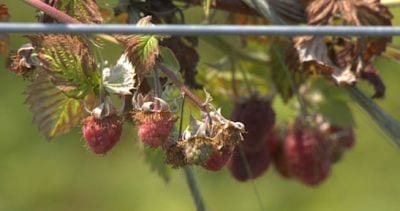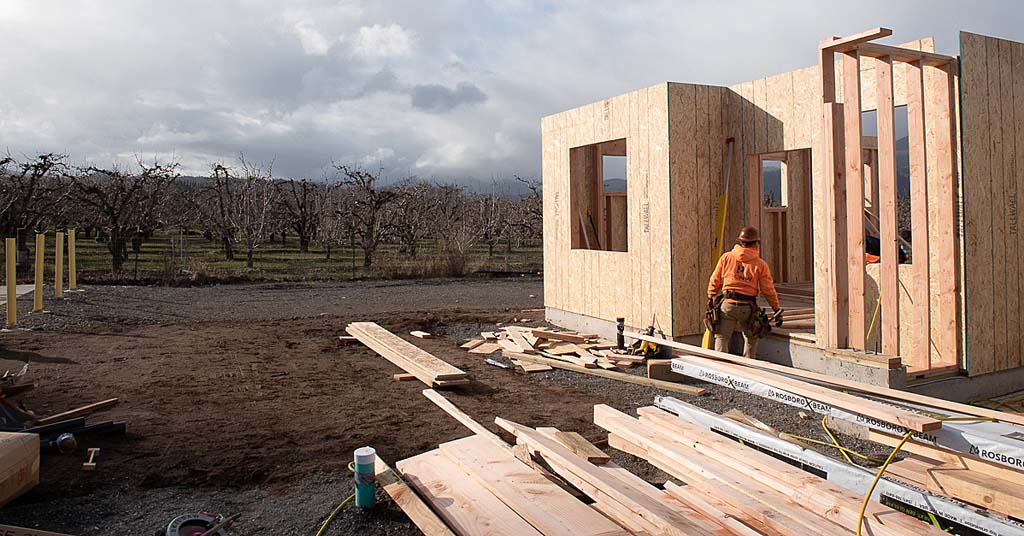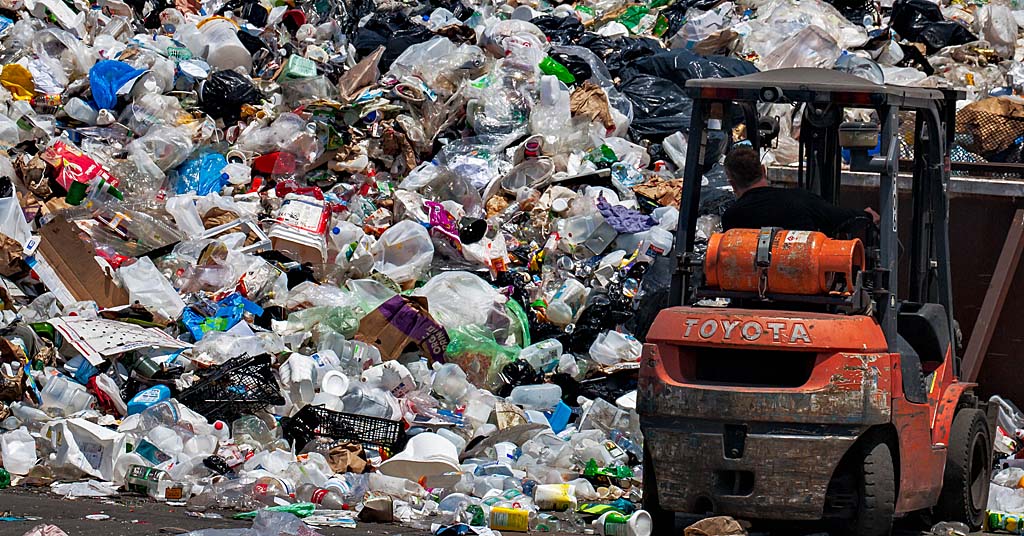‘Cull, cull, cull.’ An Oregon cherry grower surveys the withering damage to his crop following the June heat dome

Cruel summer: Cherries cooked on the tree. Image by KGW News
By Pat Dooris, KGW News. July 12, 2021. The scorching heat wave in the Northwest at the end of June destroyed an unknown amount of cherries nearing harvest in the Columbia Gorge.
Over the last 24 years, Jim Woods and his 30-acre cherry orchard near Dufur, Oregon, have weathered good and bad years, but he’s never experienced anything like the extreme heat that cooked much of his cherry crop.
“They were real cherries and they were growing,” says Woods. “And now they look like Craisins.”
Woods says the heat proved more than his fruit could handle. He says it was 115 degrees two days in a row, then got even hotter.
“It topped out here at 117,” he says.
MORE: Invasive plant species are decimating Oregon’s rangeland
All across his orchard, withered cherries hang on stems across the outside of the trees. But the heat also penetrated deep into the tree, reaching even shaded berries. It stunted their growth, and Woods says if picked, many would be thrown away because they are damaged or too small. Another term for that is “culled.”
“So if I look at this, cull, cull, cull, cull, cull, cull. A hundred percent,” says Woods as he tosses cherries to the ground.
The intense heat reduced a crop that Woods expected to bring in as much as $150,000 to zero.
“It would just be foolishness to try to pick ’em,” says Woods.
Damage widespread
Across five states in the Pacific Northwest, 2,000 orchards are harvesting an estimated 22 million boxes of cherries. It’s unclear how many the heat destroyed.

Burn victims: Across the Columbia River Basin crops were damaged by the heat, like these raspberries destroyed in British Columbia. Image by CTV News
“We certainly lost fruit. And along the river there in Oregon is no exception,” says James Michael, VP of marketing for Northwest Cherry Growers, a state agency in Washington funded by growers that supports growers and promotes cherries.
DON’T MISS OUT! Subscribe to Columbia Insight. It’s free.
Michael says there are plenty of cherries untouched by the heat in stores now, and some far enough from harvest that they were not damaged by the temperatures.
But it’s also clear that many others were hurt.
“We see heat stretching from British Columbia all the way down to California. I don’t think there was a cherry grower out there that was spared on the Pacific Coast in one form or another,” says Michael.
Columbia Insight is publishing this story as part of the AP StoryShare program, which allows newsrooms and publishing partners to republish each other’s stories and photos.











We farm 90 acres of cherries in The Dalles, and we experienced the same problems. I sent an email to Cliff Bentz’s office and the pull down menu for topics didn’t even include Climate Change. I called his office and his staff stated that Cliff was very interested in Climate change, but she didn’t provide any actions or bills he would support to reduce greenhouse gasses. He led the walkout of the Oregon State Senate to stop a cap and trade initiative a few years ago that would begin the process of reducing greenhouse gasses. Most of his constituents are involved in natural resource extraction of some sort, yet he has failed to do anything that might protect those resources in the face of unprecedented change. Sad!
Thanks for your marvelous posting! I quite enjoyed reading it, you may be a great author.
I will always bookmark your blog and definitely will come back from now on. I want to encourage you to definitely continue your great writing,
Have a nice afternoon!